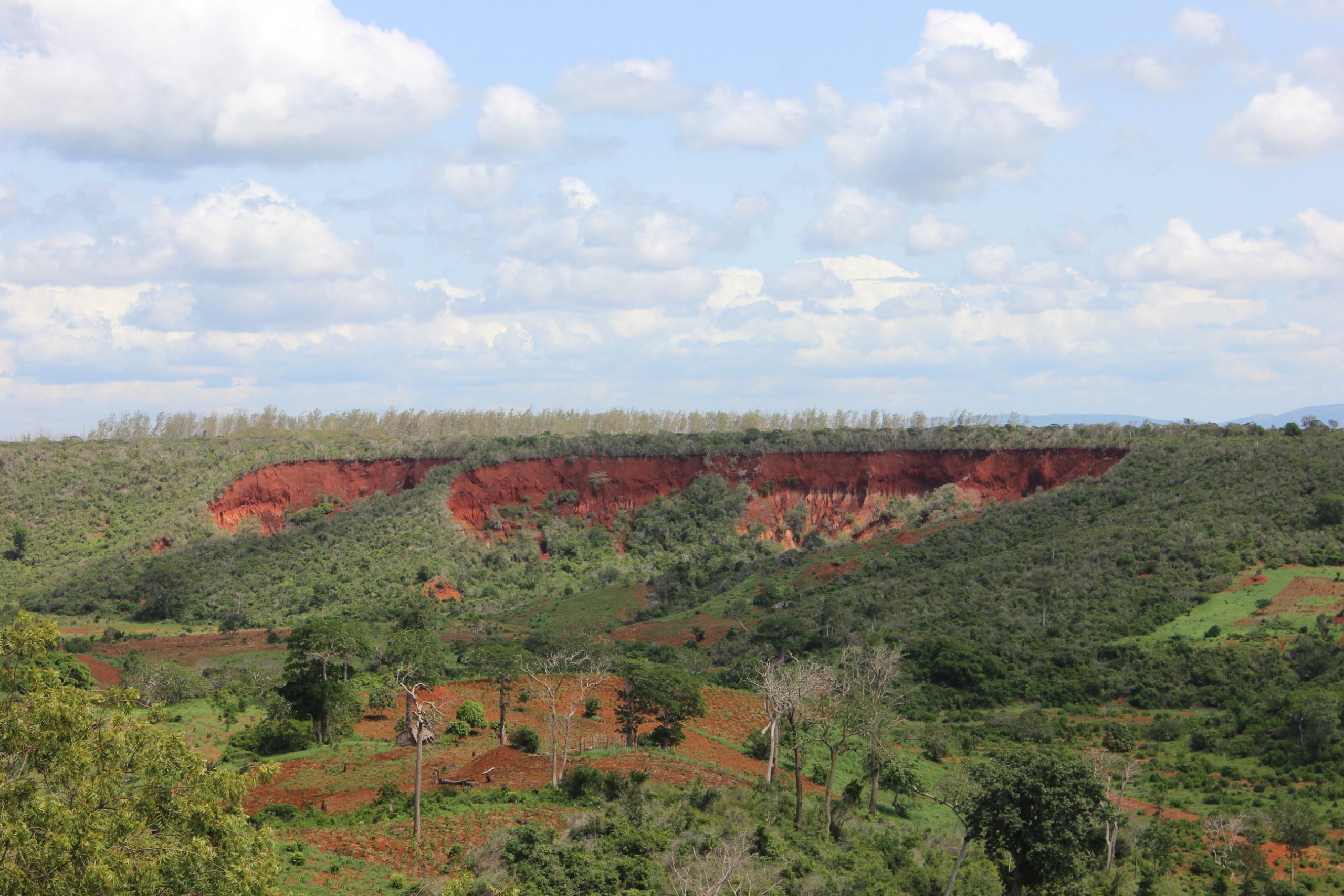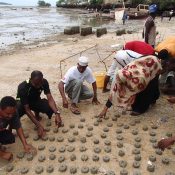
MADUNGUNI FOREST – A Remnant Indigenous Coastal Forest Dying a Slow, Painful Death.
Written by: Mr. Raphael Ngumbao, Chairman, Friends of Madunguni Forest, Mr. Charles Thoya, Chairman, Jilore Community Forest Association, and Mr. Weston Mure, resident and member of People4Nature Global.
The Madunguni Forest is a gazetted forest covering 951.85 (ha). It lies northeast of the famous Arabuko-Sokoke Forest Reserve. It is one of the last remaining tracts of Coastal dryland indigenous forest in Kenya.The Malindi-Sala gate road separates the two forests. Just like the Arabuko-Sokoke, Madunguni Forest is home to a number of rare and /or endemic species of flora and fauna. In contrast, the Madunguni Forest has been subjected to increased pressure from illegal settlers (squatters) inside the forest area, loggers, charcoal burners and firewood collectors.
It is estimated that 75% of the forest cover has been lost as a result of human interference, with the most conspicuous effect being soil erosion by water. The loss of vegetation cover has resulted in the detachment and transportation of large tracts of soils evidenced by massive land slides and earth flow in the forest and in the lowlands of Madunguni village.
The Madunguni forest was named after the Madunguni village, an areas renowned for its fertile soils and a grain basket for Kilifi County. Dungu is a traditional house built on stilts that was used as a shield against lions and other wildlife that used to roam the area. Madunguni was, therefore, the place of houses built on stilts.
The local residents had conserved the forest as a source of firewood as they had no access to the Arabuko Sokoke Forest. But more importantly, the locals used the forest to predict weather patterns. It was, therefore, regarded as sacred.
The early signs of encroachment were recorded as early as 1969. The residents of the 10-mile coastal area, referred to as Mikaoni area, covering Kakuyuni, Mere and Mida, had a habit of accessing the forest for its timber, charcoal, firewood and subsistence farming.
In 1971, the Madunguni community, in collaboration with a Mr. Tinga, the local forester, raised the issue with the Provincial Administration. Chief Awadh and chief Athuman Ndurya, in charge of Mikaoni area, were requested to take against residents degrading Madunguni Forest. The collaboration between Madunguni community and the forester led to the formation of Madunguni Location Environment Committee (LEC).
In the same year, Madunguni Forest was identified as a suitable location for Jilore/Arabuko Sokoke forest research substation by the Forest Department. However, the Madunguni Community, led by Mr. Ngumbao Mwadzili, the LEC chairman, did not agree with the idea. The forest continued to be managed by the Kilifi County Council, on behalf of the community.
By 1980, forest degradation had continued to an alarming level. Mr. Ngumbao Mwadzili was joined by Mr. Abdalla Ndema and Mr. Kaingu Bindurya, in mobilizing the community in efforts to stop further forest degradation. The community managed to have the few illegal settlers evicted from the forest. The evicted farmers did not settle far from the forest and by 1987, they had returned to the forest to continue farming.
The number of encroachers increased gradually to around 500 and by 1996, the situation within and around the forest became very volatile. The illegal settlers got backing from politicians and new encroachers arrived leading to skirmishes between old and new encroachers. And there were serious casualties including deaths.
The Provincial Administration was helpless in the face of political interference. They had to change tactics in dealing with the encroachers. Instead of taking them to court, they resorted to evicting them instead.
In 2001, the youth in Madunguni formed and registered the Friends of Madunguni Forest group to support efforts of the Madunguni LEC. Together with Madunguni LEC, and a section of Kilifi County Council, they urged Hon. Abubakar Badawy, Member of Parliament for Malindi, to table a motion in Parliament in 2003 to have the forest gazetted. The forest was gazetted as a government forest in 2004.
The encroachers, with the support of politicians, went to court to oppose the gazettement and their eviction. There was a temporary court injunction. The court granted that they remain in the forest until the case is determined. In that period, no permanent buildings were to be constructed or the forest encroached. The case has been pending in court ever since.
Meanwhile, the destruction of Madunguni Forest has continued in spite of the injunction order.
Illegal subsistence cultivation and charcoal burning continues unabated inside the forest. Encroachers have been bold enough to build a school, churches and recently a mosque, inside the forest, believing that the government will eventually give in to their demands.
The illegal settlers have grown to an estimated 2000 people. At the rate at which their population is growing, the forest will be wiped out in less than 5 years. The biggest impact in not only on the loss of the forest but on farms that have turned unproductive in and around the forest. The land slides and water run-off wash down unproductive soils that covers the lowland farms in Madunguni, the grain basket of Kilifi County.


